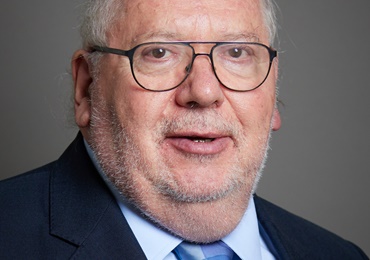A deeper understanding of fitness to practise performance
We know that our work in fitness to practise (FtP) plays a significant role in how the GDC is perceived. One of our statutory duties is to consider and investigate serious concerns raised about dental professionals.
We’ve recently published findings from research in 2020 into perceptions of the GDC, where overall opinions of the GDC were more negative (58%) than positive (21%), worsening among dental professionals since 2018. The report shows this was largely driven by views about our response to the pandemic and ongoing dissatisfaction with fitness to practise processes.
We often hear that fitness to practise cases take too long to resolve, and we agree. We’re often frustrated by having to work inside a framework of outdated legislation which is too detailed and inflexible. This is why we’ve called for increased flexibility in the upcoming regulatory reforms which will allow us to take a more proportionate and responsive approach to fitness to practise. This will be better for both patients and dental professionals.
Excess caseload has increased
While we are hopeful that regulatory reform will lead to improvements soon, we continue to seek gradual improvement and efficiency now. This takes constant effort and how we manage the day-to-day FtP caseload is critical. We also make no excuse when our performance is not where we need it to be.
Towards the end of 2020, we began to see performance slipping in how we progress cases. The pandemic was a difficult time for everyone, and it did reduce our capacity, but that alone does not explain what was happening. The team was too lean and lacked the necessary experience to maintain performance in these challenging circumstances. The volume of excess cases, beyond what we expect to be managing at any one time, started to creep up.
We applied things we’d tried before, such as rigorously improving and embedding internal processes and identifying and addressing skills gaps, but what we tried didn’t work because of a lack of capacity and experience in the team. It also took too long to identify that it wasn’t working and by the time we recognised that, the excess caseload had grown even further.
Our current excess caseload is around 30% higher than it should be. For a number of reasons, we were not managing FtP effectively enough and did not see the early warning signs when performance was dipping. We’ve spent recent months exploring why and making changes to improve this, with more improvements to come.
Taking steps to better understand fitness to practise performance
We’re redesigning how we monitor performance, to give us a better early warning system when things start to go wrong and to help us to understand why. We’ve used historical data to measure progress of a case at each stage of the process: initial assessment stage, assessment and case examiner stage and hearing stage.
We have a target of 10 working days from receipt for all cases to be processed by the initial assessment team. In our Fitness to Practise Statistical Report for 2020, we reported that 99% of cases were meeting this target, showing consistency in performance at this stage of the process.
However, the next stage of assessment and case examination is complex, often requires detailed information from various parties, and may involve an application for an interim order to restrict a registrant’s practice until their case is resolved.
What our analysis of the historical data told us is that the type of fitness to practise concern is very important in predicting how long it will take to progress. Cases involving dental professionals working outside their scope of practice, or with health issues or complaints that affect a single patient, take less time than complex cases involving, for example, conduct, more than one patient, or another healthcare regulator.
Case examiners refer the most serious cases to a Practice Committee to consider. In the last three months of 2020, 53% of cases took longer than nine months to reach the hearings stage after the case examiner’s referral. Factors affecting this are usually outside our control and include the availability and readiness of parties and the estimated length of hearings. Once a hearing has started, adjournments can introduce further delays.
Using this insight to monitor fitness to practise performance in future
Helping everyone involved to understand how long different types of cases might take to get from initial assessment to closure is helpful to manage expectations and provide clarity on the process. We are testing how we use the historical data to do this and to improve how we monitor and manage performance.
Over the next few months, we will be examining detailed operational data for different types of cases at every stage of the assessment and investigation process to spot issues and trends. We will separately monitor data for all stages for every case: initial assessment, assessment, case examiner stage and hearings. This will quickly show early warning signs and allow us to investigate and correct it.
We will aggregate data to provide a clear view of overall and ongoing FtP performance.
We are testing this approach to managing FtP performance over the coming months while we stabilise the excess caseload, before implementing the strategic performance indicators we, stakeholders and dental professionals need to understand process and performance.
Building capacity and experience in the team
We are also increasing capacity and capability in our casework teams through recruitment, providing permanent roles for existing experienced caseworkers and improving how we train new starters, so they quickly become confident at progressing cases to reduce delays.
Although this will provide capacity, stability and resilience, we know from previous experience that it takes around a year for the team to settle, gain experience and get on top of the excess caseload.
However, the groundwork we’ve done to better understand our FtP performance means that we’ll get earlier visibility of progress and be able to take action sooner.
We are also going to talk to stakeholders about steps we can take to improve understanding of how casework is already separate from hearings and adjudication activity.
Our case presentation team is rigorously separated from the independent FtP panels, and we have no influence over the individual decisions made by a panel. But we’re looking to do more to raise awareness of this separation and make it easier for patients and dental professionals to understand what’s involved when an FtP investigation progresses to a Practice Committee hearing.
In summary
And while we’re improving, it’s important to keep in mind that the vast majority of dental professionals will never experience a FtP hearing. We register around 120,000 dental professionals and in 2020, 1,034 concerns were received. For every 100 concerns received in 2020, 37 were assessed by case examiners and 15 progressed to a Practice Committee, which are small numbers when compared to the registers and concerns received.
Our advice to any dental professional who we contact about a concern is to engage in the process. Indeed, we know that professionals who do engage typically see less adverse outcomes than those who do not. So, talk to your indemnity provider and talk to us. Whether or not you agree with the concern raised, consider what learning there might be and consider tailoring your CPD around this as it might help you demonstrate insight and remediation should the matter be referred to case examiners, but will certainly help you improve your practice regardless of the outcome of the FtP matter.
In the meantime, we are committed to continuing to improve FtP performance and working with the dental professions to promote professionalism as the cornerstone of patient safety.
 eGDC
eGDC





















